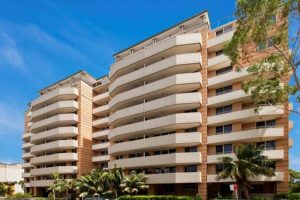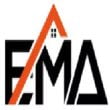Condo Milestone Inspections:
What are Condo milestone structural inspections?
Condo milestone inspections are required for every residential and commercial building in Florida that is three stories or higher.

If you own any such structure or are a member of the building association, you’re legally required to conduct timely inspections. For that purpose, the laws require you to hire a structural engineer like EMA Structural Forensic Engineers licensed in Florida.
The engineer/s will visually assess all areas of your building and analyze its structural components for safety by structural engineers. Once the inspection is complete, they will provide a structural inspections report detailing their findings, professional opinions, and recommendations.
It is possible that your building has structural problems, which will be detailed in the report, along with ways you can fix them.
The structural building inspector can even refer construction contractors to conduct the impending repairs on your property.
There you have it: milestone structural inspections simplified, Structural Engineers, Forensic Engineers, Hurricane Damage Inspections.
New changes to Florida Condo milestone inspections?
The State now requires condos and residential cooperative (co-op) association buildings three stories or taller to have structural inspections called “milestone inspections” once they reach 30 years of age and every 10 years after that.
Your building may need milestone inspections if it is…
- Three stories or higher, as determined by the Florida Building Code, AND
- Owned (partially or fully) by a condominium association or cooperative association as a residential condominium under Chapter 718 or a residential cooperative under Chapter 719
Timing
Buildings that require milestone inspections will need to be inspected once they reach 30 years of age and every 10 years after that.
The timing for the initial inspection is as follows:
- If your building reaches 30 years of age before July 1, 2022, the building’s initial milestone inspection must be performed before December 31, 2024.
- If your building reaches 30 years of age on or after July 1, 2022, and before December 31, 2024, the building’s initial milestone inspection must be performed before December 31, 2025.
- If your building reaches 30 years of age on or after December 31, 2024, it will need to be inspected by December 31 of the year in which it reaches 30 years of age.
Building age isbased on the date the certificate of occupancy for the building was issued.If that is not available, other official building records may be used as evidence of the age of the building.
Frequently Asked Questions
What is a Condo milestone inspection?
A “milestone inspection” is a structural inspection of a building, including load-bearing walls and other elements that are designed to support the building. These inspections keep residents safe by ensuring their homes are in good structural condition. They help determine whether any of the buildings’ structural components need to be maintained, repaired, or replaced. The inspections are performed by a licensed architect or engineer authorized to practice in Florida.
How will I be notified that my building needs an inspection?
Local government building officials will send notices about required inspections by certified mail. They will send this notice to the condominium association or cooperative association and any owner of any portion of the building that is not owned by the condominium or cooperative association.
The condominium or cooperative association must notify the unit owners of the required milestone inspection within 14 days of receiving the written notice from building officials and provide the date that the milestone inspection must be completed. This notice may be sent to unit owners electronically (e.g. via email) or by posting on the association’s website if the unit owners consented to receive notices electronically.
How does a Condo milestone inspection work?
During phase one of the milestone inspection, a licensed architect or engineer authorized to practice in Florida will visually examine the habitable and non-habitable areas of a building, including its major structural components, and provide an assessment of the structural condition of the building. If the architect or engineer finds no signs of substantial structural deterioration, phase two of the inspection is not required. To complete phase one, the licensed engineer or architect who performed the inspection must submit the inspection report to the appropriate local government agency.
Phase two of the milestone inspection must be performed if any substantial structural deterioration is identified during phase one. A phase two inspection may involve destructive or nondestructive testing at the inspector’s direction. The inspection may be as extensive or as limited as necessary to fully assess areas of structural distress to confirm that the building is structurally sound and safe for its intended use and to recommend a program for fully assessing and repairing distressed and damaged portions of the building. When determining testing locations, the inspector must give preference to locations that are the least disruptive and most easily repairable while still being representative of the structure. An inspector who completes a phase two milestone inspection will prepare and submit an inspection report.
What counts as a “story”?
As defined by the Florida Building Code, a “story” is the portion of a building included between the upper surface of a floor and the upper surface of the next floor or roof above it. A story is measured as the vertical distance from top to top of two successive tiers of beams or finished floor surfaces and, for the topmost story, from the top of the floor finish to the top of the ceiling joists or, where there is not a ceiling, to the top of the roof rafters.
According to the Florida Building Code (Building), a basement counts as a story. A garage or parking area beneath the living space also counts as a story. However, a mezzanine – an intermediate level between the floor and ceiling of any story – does not contribute to the number of stories as it is considered a portion of the story below.
What counts as “substantial structural deterioration”?
“Substantial structural deterioration” means substantial structural distress or substantial structural weakness that negatively affects a building’s general structural condition and integrity. The term does not include surface imperfections such as cracks, distortion, sagging, deflections, misalignment, signs of leakage, or peeling of finishes unless the licensed engineer or architect performing the phase one or phase two inspection determines that such surface imperfections are a sign of substantial structural deterioration.
Does “substantial structural deterioration” mean the same thing as FEMA’s “substantial damage”?
No.
“Substantial structural deterioration” means substantial structural distress or substantial structural weakness that negatively affects a building’s general structural condition and integrity. The term does not include surface imperfections such as cracks, distortion, sagging, deflections, misalignment, signs of leakage, or peeling of finishes unless the licensed engineer or architect performing the phase one or phase two inspection determines that such surface imperfections are a sign of substantial structural deterioration.
“Substantial damage” (as defined by FEMA) means damage of any origin sustained by a building or structure whereby the cost of restoring the building or structure to its before-damaged condition would equal or exceed 49% of the market value of the building or structure before the damage occurred. Milestone Inspections coral springs

